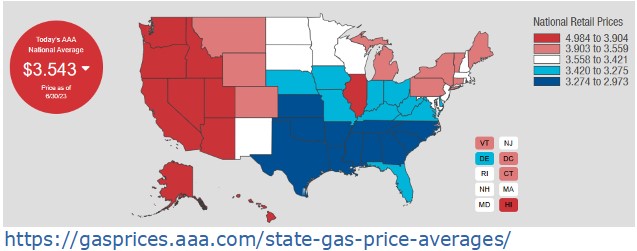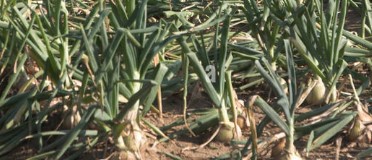Washington State is Number One.
That’s the case for the price of gasoline. What put the State in the lead? Tax at the pump was increased a few years ago. Roads need fix’en. True.
Mid-grade gas in Washington state is averaging $5.199 a gallon, premium is averaging $5.400 and diesel is averaging $4.952, according to AAA.
The thing that catapulted WA into 1st Place is the Climate Commitment Act that went into effect in January. Companies that emit CO2 gasses are charged a carbon offset fee based on how much CO2 emissions they produce. The more emissions, the higher the fee. Technically this is not a tax. Washington political types hate the word tax. It is not added at the pump. This “fee” seeps through into everything, but especially to gasoline.
Because it is new the amount it adds to the price of gasoline is unclear. It can only be an estimate. Those estimates vary from 46¢ per gallon to 66¢.

Tax for any state can be found at the AAA ‘url’ under the map.
Summer — and plants need water. Over the years this has become problematic. Technically this land has a water right. However, the water has to be diverted from the creek and flow across property of others. Some years are better than others. And over the years the little ditch gets overgrown and silted up.
Going back 100 years, it was the custom for folks to clean the ditches each spring. In recent years there have been fewer “men & boys” to get the job done. Also, the State has made it difficult to clear barriers in the streams. In the local case, the streams have partially filled in and redirected as Nature sees fit. Half the water that once came past the diversion for me and several others now makes a new loop and drops the water lower down – past – the out-take.
This year the stream carried enough water for about 3 weeks as fast melt of snow swelled the runoff. I watered some things.
Now I have plum and walnut trees and onions. I use the well water, about 30 gallons morning and evening. The well is not sufficient for lots of lawn or garden watering. I don’t try.
A storm this week provided about 120 gallons in barrels from the roof.
The temperature today at the airport was 93°F. In the bright sun it feels a lot warmer. This pattern is set to continue. Independence Day is expected to be 86, Thursday 91.
The onions take the sun and the heat fine, with water. 
Wind is hard on them. This week the gusts began on Thursday afternoon, with the highest being 31 mph. The forcast for the region is for the wind to decrease Saturday night. Good.
Long day sweet and storage onion varieties do well in the northern states that have between 14-16 hours of daylight length. Onion bulb formation (aka ‘bulbing’) begins when a certain day length is reached. Short-day onion varieties begin to form bulbs when they receive 10 to 12 hours of daylight, intermediate-day onions need 12 to 14 hours of daylight, and long-day varieties require 14 or more hours of daylight.
Bulb size is largely determined by the number and size of the leaves at bulb initiation. The larger the tops (foliage area) at bulb initiation, the larger the bulbs will be.
Here day length reaches 14 hours on April 23rd. On June 17 we get 15:53 hr/min. It stays about there until mid-July when daylight will be decreasing about 2 minutes per day.
The decrease in daylight triggers the onions to “bulb” – the nutrients go from the leaves to the bulb, it gets larger and the leaves lose stiffness and yellow, then the erect foliage falls over. Harvest follows.
The oldest son of my oldest brother (and son’s wife) are visiting my sister in Parma Ohio. We had a phone conversation, mostly about the early days of my mother and father – his grandparents – and others of that time, the 1920s into the ’40s. Some stuff we know, some we can suss out, and conjecture fills the knowledge voids. Oh well.
Thanks Peggy, Rod, and Gail.
Keeping Track
on the Naneum Fan
John